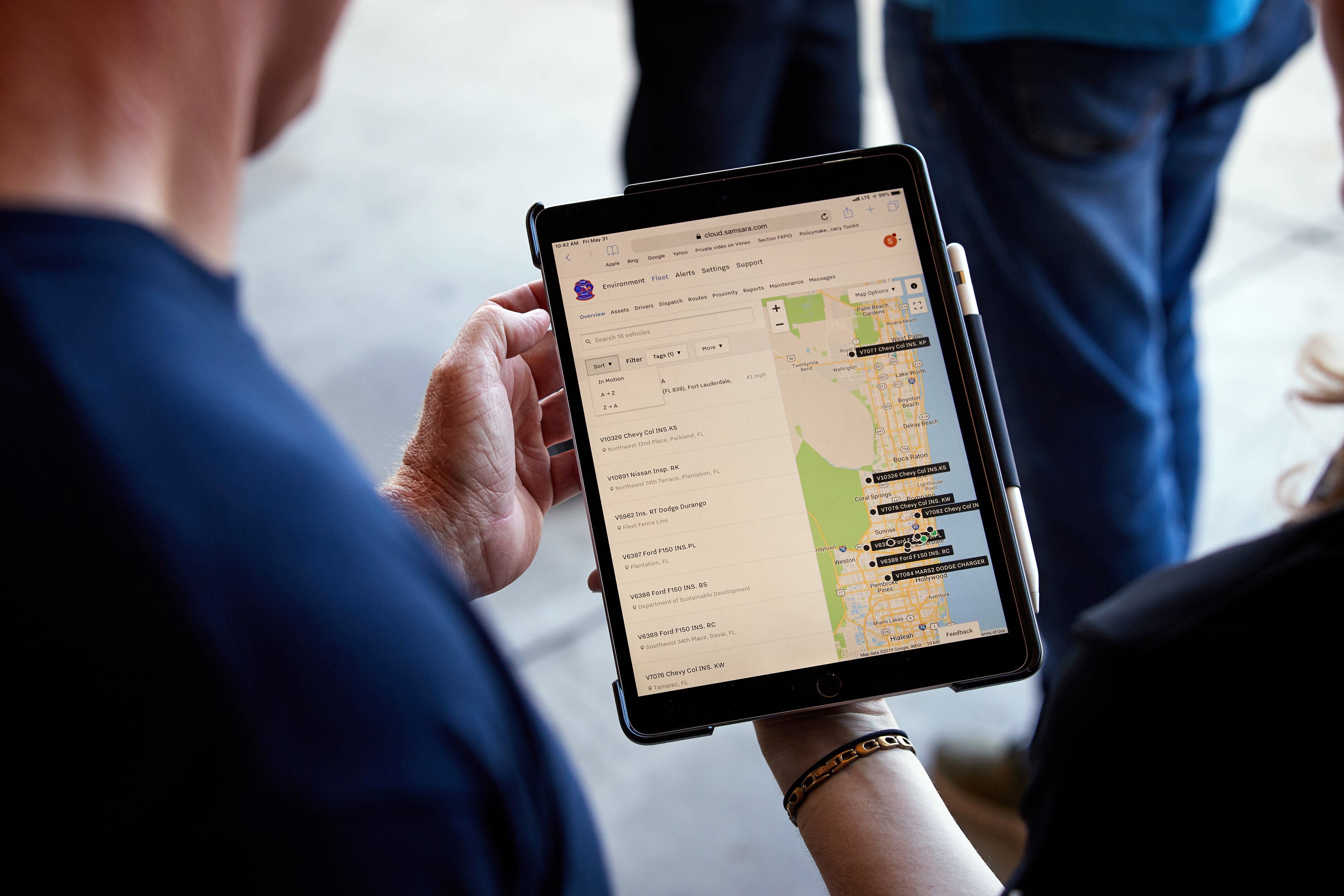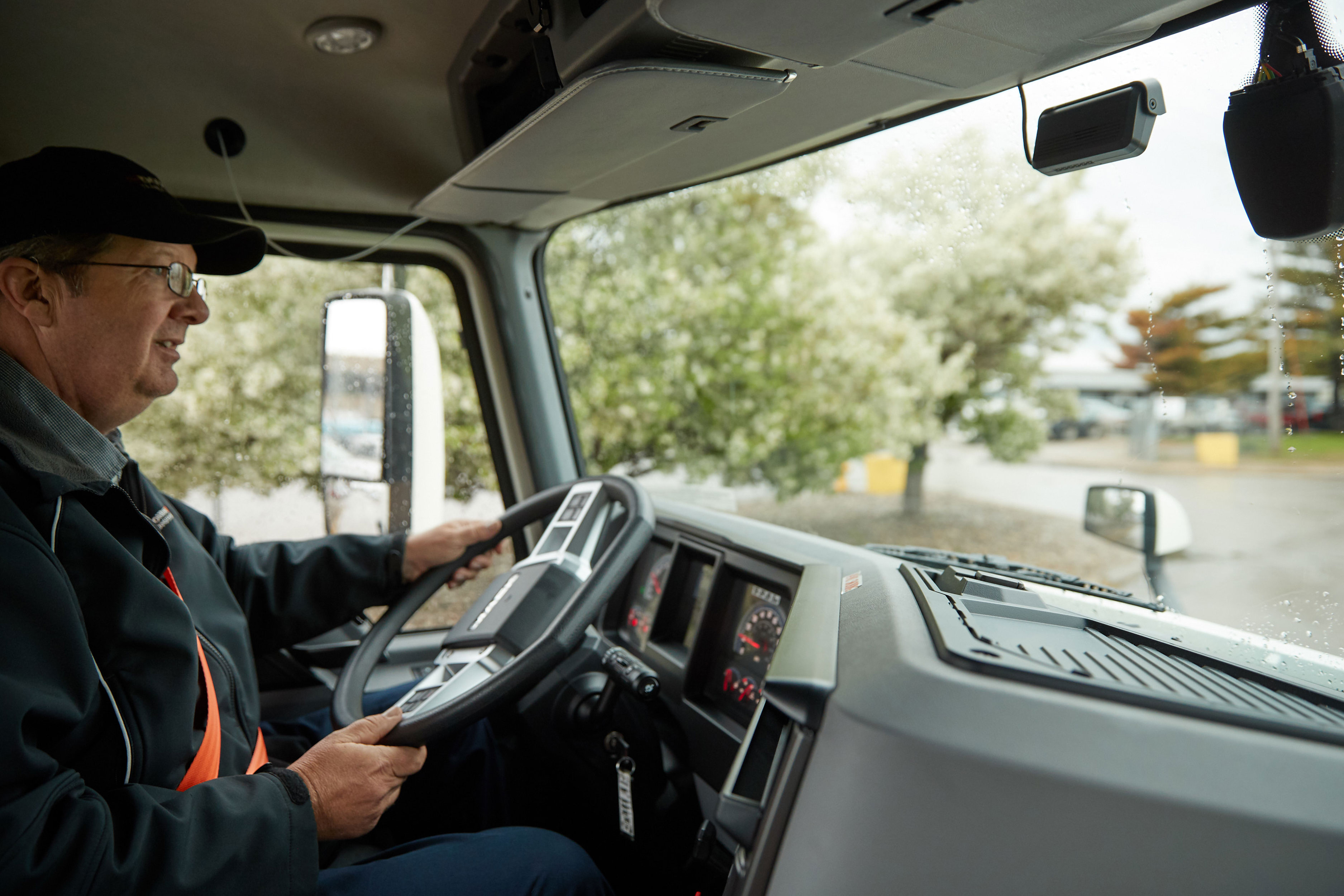Advertisement feature from Samsara
 Industries such as construction, logistics and manufacturing that rely on vehicle fleets are on the verge of a tectonic digital shift, says connected operations cloud provider
Industries such as construction, logistics and manufacturing that rely on vehicle fleets are on the verge of a tectonic digital shift, says connected operations cloud provider
Traditionally, the sales pitch for telematics has focused on GPS tracking and driver behaviour. But it has woefully underplayed the role that the technology can play in helping companies digitise their entire business, according to a leading company in the field.
The result has left fleet managers facing a tsunami of potentially valuable data that is difficult to consolidate into cohesive, actionable reports, and that still sits in a silo, separate from the rest of the business, said Philip van der Wilt, vice-president EMEA, Samsara.
Van der Wilt is openly critical of the industry for failing to help customers adopt and implement technology that could connect fleets digitally to their entire businesses in order to bring the benefits of digitisation to physical operations.
Why, for instance, do most drivers carry a mobile phone, yet many still rely on pen and paper for everyday tasks, such as worksheets and delivery notes?
“It’s the difference between shipping the system and telling the client to open the box and magic will happen, or spending the time to truly understand their business, the issues they are facing and the opportunities they are trying to pursue,” he said.
“If we understand this, we can set a strategy to help. It’s a different starting point and, once you do that, it’s laser-clear what the client needs to do and how our technology can underpin their plans and how, collectively, we can coach them with training and best practices to achieve their strategic outcomes.”
Van der Wilt added that forward-thinking businesses already understand how data can power a business to deliver cost savings, efficiency gains and business insights. One Samsara client used real-time operational data to identify more than £8 million of underutilised equipment, which it could then sell to fund new equipment it really needed.
And, in a survey of 1,500 operations executives for the 2022 Samsara State of Connected Operations report, 89% of respondents said disjointed technology and data negatively impact their bottom line, which is why 84% cited updating legacy tools as a high or critical priority for this year.
While other industries and even other departments within companies have modernised their roles and operations, Samsara says the employees that keep physical operations running – drivers, field technicians, safety managers, warehouse supervisors – have, historically, been underserved by technology.
Yet connected vehicle technology, whether factory-fitted by manufacturers or an aftermarket ‘black box’ telematics system, is simply a tool to achieve a greater objective, not a silver bullet, said van der Wilt.
Harnessing the Internet of Things (IoT) and real-time data can play an important role in transforming operational efficiency, enhancing safety, improving environmental performance and driving innovation; but success depends on a fresh, company-wide mindset to achieve business objectives.
“If you want to drive change it’s about culture and leadership, and that needs to come from the top,” he said.
As an example, he cited the case of a large fleet client that was determined to improve driver safety and decided to install dash cams in all of its vehicles, including the company cars driven by directors.

This highlights the subtle, but important, difference in drivers’ perceptions of connected operations technology, dependent on corporate culture: introduce black boxes and dash cams as a tool to catch out and punish poor drivers, and they will be resisted as ‘Big Brother’; install black boxes and dash cams as a way to ensure every driver returns home safely at the end of the day, and connected to IoT data will be welcomed as a ‘guardian angel’.
And in industry sectors such as logistics, where the recruitment and retention of staff is a constant challenge, businesses with a genuine desire to look after their staff stand a much better chance of keeping them.
“A lot of companies talk about safety, but what they really mean is how do they save money on fuel or insurance,” said van der Wilt. “I’m calling it out because the most successful companies clearly separate operational efficiency from safety. Safety is a coaching and training programme that really wants to keep drivers safe and is not about fuel consumption, harsh braking and maintenance spend.”
Nonetheless, significant cost savings are achievable from the smart deployment of connected operations technology, moving beyond driver behaviour and route planning to exploit artificial intelligence (AI) opportunities.
Samsara clients are already using machine learning to identify when components are likely to fail and to adopt preventative maintenance that avoids breakdowns and unscheduled vehicle downtime.
“We are also starting to see rental and leasing companies using AI to analyse how a customer is driving a vehicle as well as the mileage, in order to define the ideal time to replace a vehicle before its maintenance costs rise too high,” said van der Wilt.

This same approach is helping fleets with the transition to electric vehicles (EVs). Amid today’s new vehicle supply shortages, forecasting the future maintenance spend on internal combustion engine (ICE) vehicles currently on the fleet can help to identify which vehicles to replace first. Moreover, merging data sets already in use for ICE vehicles, such as GPS tracking and route planning, with vehicle use cases and local charging infrastructure can highlight vehicles that could be replaced with an electric alternative without creating range anxiety.
And, once EVs arrive on a fleet, connected technologies are vital for successful deployment.
“How much charge does each vehicle have? What’s the range? How far will it go until it has to be recharged? Where’s the next charge point if needed? Where’s the nearest mobile charging recovery vehicle in an emergency?” asked van der Wilt.
“More than ever, managers need complete visibility across their entire fleet, regardless of whether it’s ICE, hybrid or EV, with the ability to drill into specifics such as fuel efficiency, route optimisation, safety, logistics and driver data. This critical visibility will enable fleet managers to better navigate the challenging environments they face today, and bring the 360 perspective needed to innovate for tomorrow.”
View our website here
1 Alie Street, London E1 8DE
 T: +44 (0) 20 3965 2700
T: +44 (0) 20 3965 2700
















Login to comment
Comments
No comments have been made yet.